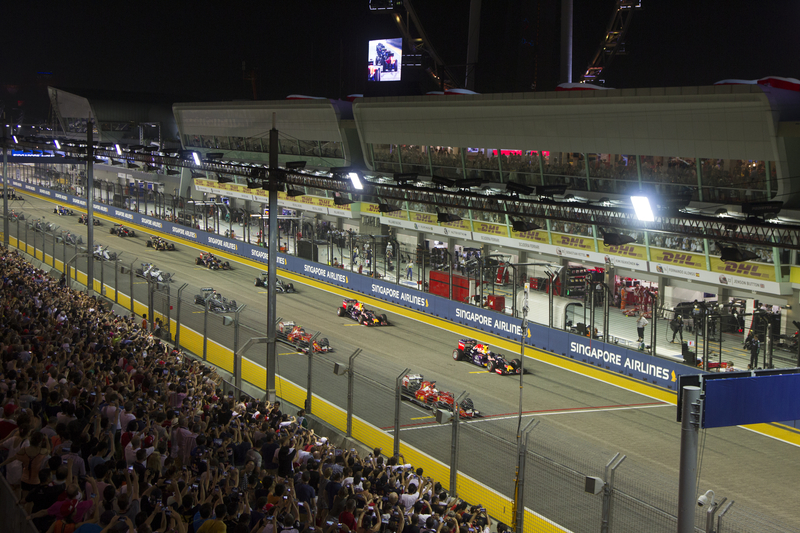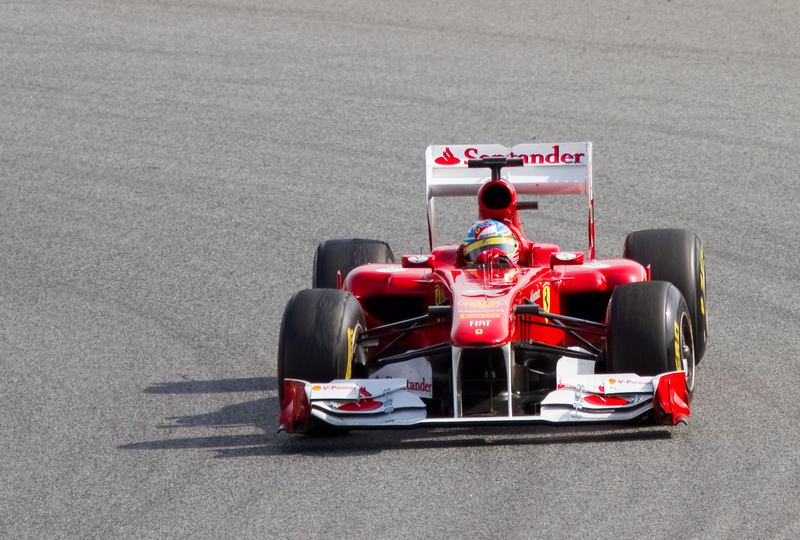Last updated on July 7th, 2022 at 11:04 am
Before each Formula One race, drivers must qualify to secure their spot on the starting grid. The FIA has several rules about qualifying, so it can be confusing or unique for new fans to experience for the first time. As drivers push their cars to get the fastest time around the track, they often reach speeds and lap times much faster than they would during a race.
So, when does qualifying happen in an F1 race? How does the process work precisely, and does qualifying impact world championship standings?
Here’s everything you need about F1 qualifying to know what to expect before race day.
When Does Qualifying Happen?
In most situations, qualifying happens the day before a Grand Prix. It gives teams time to test their car before qualifying, giving them time on the track where drivers can tweak or adjust their strategy and adapt settings on the F1 car. Practice sessions usually run on Friday and Saturday before a Sunday race, with the last “free practice” coming a few hours before the qualifying session.
Is there an Exception to Qualifying the Day Before a Race?
The only time qualifying doesn’t take place the day before a race is if that Grand Prix weekend has an additional sprint race. An F1 sprint race is an additional race that usually takes place the day before a race. Sprint qualifying re-sets the starting grid for the Grand Prix on Sunday, and drivers will start the race in the order they finish.
For example, during the 2021 Brazilian Grand Prix, Mercedes driver Lewis Hamilton qualified 20th on the grid. However, in the 24-lap sprint race, he charged up 15 grid positions, finishing the race in fifth, which gave him an excellent chance to win the F1 race on Sunday.
A Brief History
The FIA has attempted several rule sets to ensure qualifying is as exciting as possible. When qualifying was first adopted in the 1950s, teams originally had two different sessions on two days during race weekend to set the fastest lap time on a track. Today’s qualifying format is a single one-hour event broken into three sessions.
How Does the Qualifying Process Work in Formula 1?
Qualifying starts with the Q1 session, which is 20-minutes long. This session allows all 20 cars on the grid to set their fastest time on the track. As cars race around the track, their tires shed rubber, which can help the ground evolve, making it more tactile and giving the cars better grip. That means that vehicles tend to perform better as the session goes on. After 20 minutes, the slowest five cars are eliminated, and the fastest 15 cars continue onto Q2.
The second qualifying session, Q2, is very similar to Q1, except that it’s only 15 minutes long instead of 20. In this session, many teams change their tyres for softer compounds with less durability but better grip for optimal performance. Historically, drivers who made it through Q2 into Q3 had to start the race on the Pirelli tyres they used in Q2. However, the FIA scrapped the rule at the beginning of 2022 with the release of new regulations.
At the end of Q2, the slowest cars are once again eliminated. The qualifying session ends with Q3, a ten-minute shootout that allows the last ten cars to battle for their final grid placement. F1 teams aren’t allowed to refuel their vehicles during qualifying, so they often run on low fuel at the end of the sessions. That means the cars weigh much less than they’d typically weigh during a race, giving them a chance to set down blistering speeds.
What is Parc Ferme?
After qualifying, F1 cars are locked in their current state by a condition called “parc ferme.” This locking period lets stewards review the vehicles before the race so they can make sure they can legally take to the track. If a team chooses to change a car after qualifying, they will often face a grid penalty that will push them further down in the starting lineup.
Unique Strategies During Qualifying
One of the interesting parts of qualifying is that it allows fans to watch how teams strategize at each race venue. For example, the long straight-away tracks like Monza and Baku provide a tremendous advantage for drivers driving in the slipstream of a car ahead of them. This advantage can cause some vehicles to wait for another to enter the track.
For example, the 2019 Italian Grand Prix at Monza showed so many F1 drivers waiting for an opportunity to get a tow, that only one set a time in Q3. Charles Leclerc, driving for Ferrari, earned pole position, or first place on the starting grid, for choosing to race without trying to get a slipstream.
Does Qualifying Impact World Championship Standings?
The Formula One points system doesn’t benefit drivers who qualify on pole position during a qualifying session. However, during sprint qualifying, the fastest ten drivers do earn points that can help them in the quest to become world champions. The top eight drivers earn points at the end of sprint qualifying, with the fastest driver earning eight points and the eighth driver earning one.
Conclusion: How Does F1 Qualifying Work?
With cars speeding around the track as fast as possible, it’s no surprise that qualifying is a fan favorite. In the motorsport world, the unique, elimination-style nature of F1 qualifying helps fans stay on the edge of their seat as they wait to see which driver pushes his car to the limit and gets the honor of starting in pole position. Qualifying has several rules, and they might seem like it’s hard to follow. However, after watching a few rounds, you’ll anxiously wait for Q3 to see the fastest cars on the track competing for a chance to win on Sunday.
Similar Posts:
What Does Interval Mean in F1?
How Many Laps in a NASCAR Race?
What is the Difference Between NASCAR and F1?
How Much Do NASCAR Drivers Make?
How Many Cars are in a NASCAR Race?
Greg Kristan, owner of The Stadium Reviews, LLC and TM Blast, LLC, brings his extensive experience visiting over half of the MLB ballparks, along with numerous MLS, NHL, NBA, and NFL venues, to provide in-depth coverage on the bag policy, food options, and parking. He has also been interviewed about his experiences on several sports podcasts.









